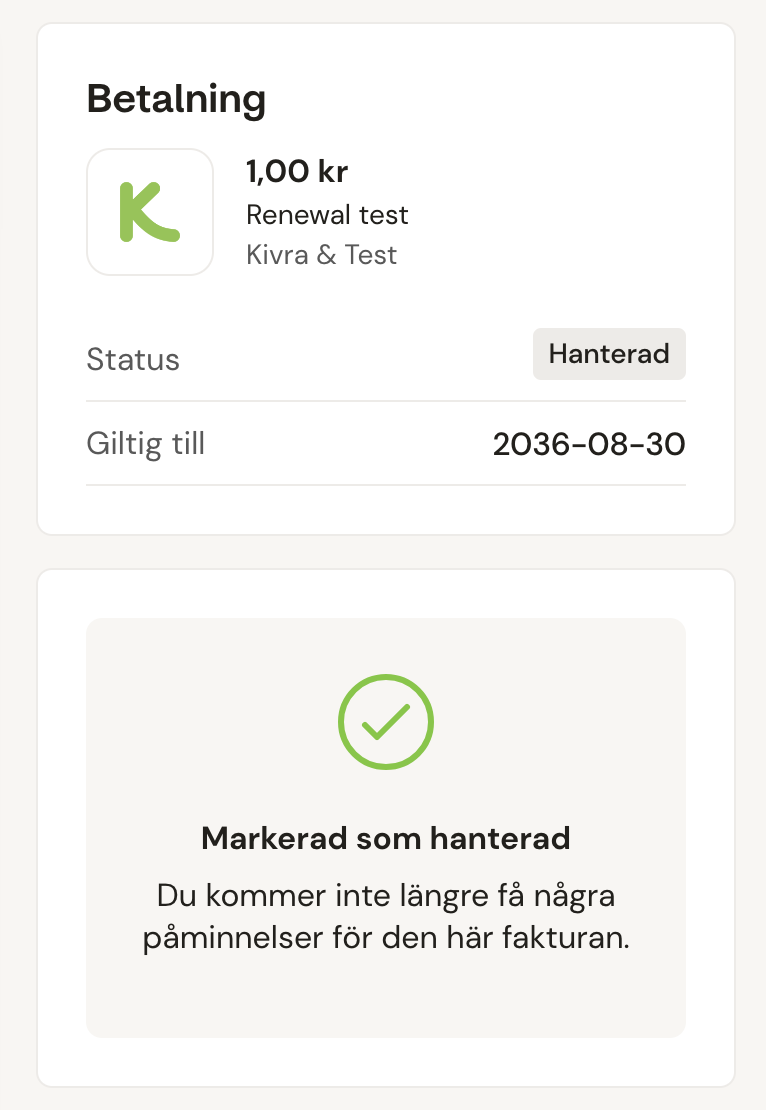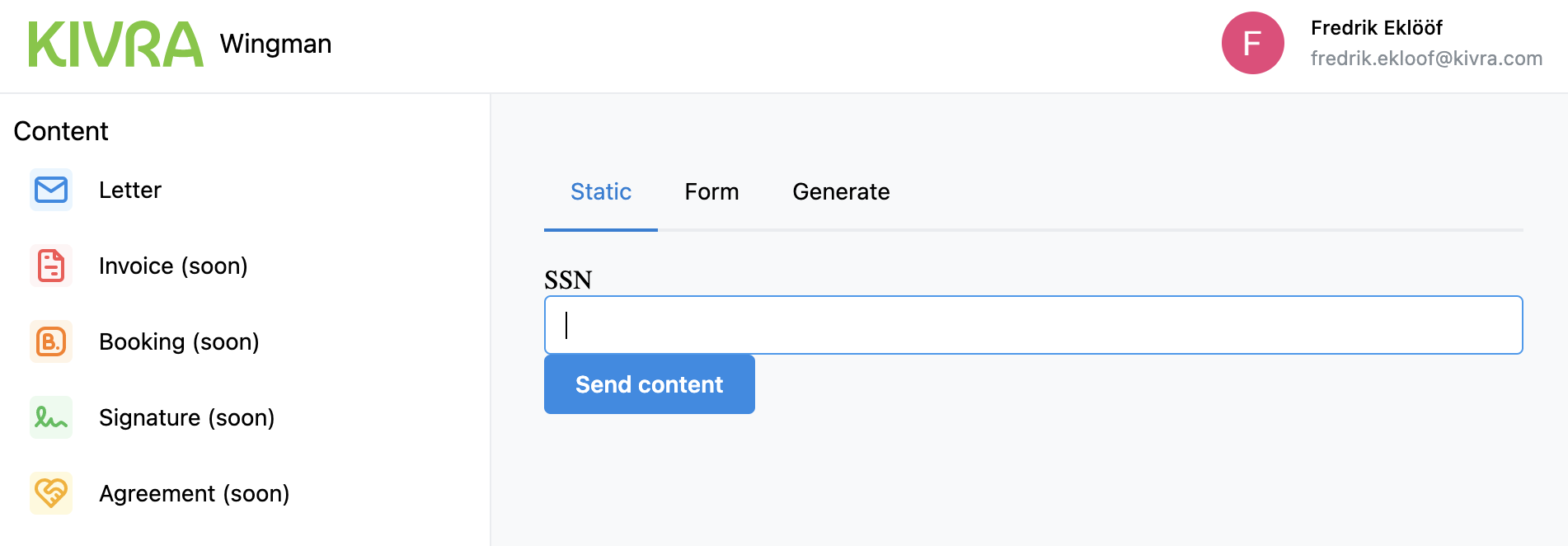Web releases
The latest and greatest on the web
The latest and greatest on the web
18 August 2022
Table of contents:
We worked a lot on improving the UX for invoices. When you view an invoice it’ll now be clear what state it’s in and you’ll see more information for paid or handled payments. We introduced a lot of combinations for the payment card, so that the information displayed is tailored to the status and payment provider (for an example Swish) that was used.
Here’s an example of how an invoice that’s marked as handled looks like:

We have a history of using a component library called Material UI (which was developed by Google). Now that we have our own component library we’ve put a lot of effort in removing all legacy code that uses Material UI.
This takes a lot of effort but will mean that we’re not entangled with an external component library. By removing this dependency we’ll ship a lot less code to the users (which in turn leads to faster loading times) and makes it a lot easier to maintain our components since they’re tailored to our needs.
During this summer we’ve removed the dependency to Material UI and rewritten more than 25 components used throughout our web apps. And we’re soon ready to finally say that we’re free from Material UI.
Previously we’ve been using Cypress, which has been the de-facto standard tool when it comes to web development. We have a long history of bugs and unreliable behavior that has caused many headaches, but a while ago Microsoft launched their contender for end-to-end testing called Playwright.
We’ve tried this alongside of Cypress many months now, and we’re ready to ditch Cypress. The main benefits are that Playwright is easier to work with, easier to parallelize test runs and it’s more reliable.
Since we have a lot of end-to-end tests written with Cypress, we’ve spent a good chunk of time during this summer to port them to Playwright.
A receipt sender told us that they wanted us to add support for displaying some extra information connected to an article, so we fixed that.
We know first hand that it can be a bit tricky to create content and send it to your user in sandbox. And not everyone knows how to use the command line to create content, this most likely leads to people (hopefully) asking other people to create content for them. Or in worst case that they feel that they cannot test things on their own.
So we looked into how we can help the company with that. The goal is to have an easy to use web application where you log in, click on the content you want to create, fill out the fields you want to change and boom. Send it to any given sandbox user.
We don’t yet really know what this could grow into, but we believe that there’s a need within the company for a tool like this. We do know that at least we in the web team have a need for a tool like this, when working day to day and for onboarding new developers.
